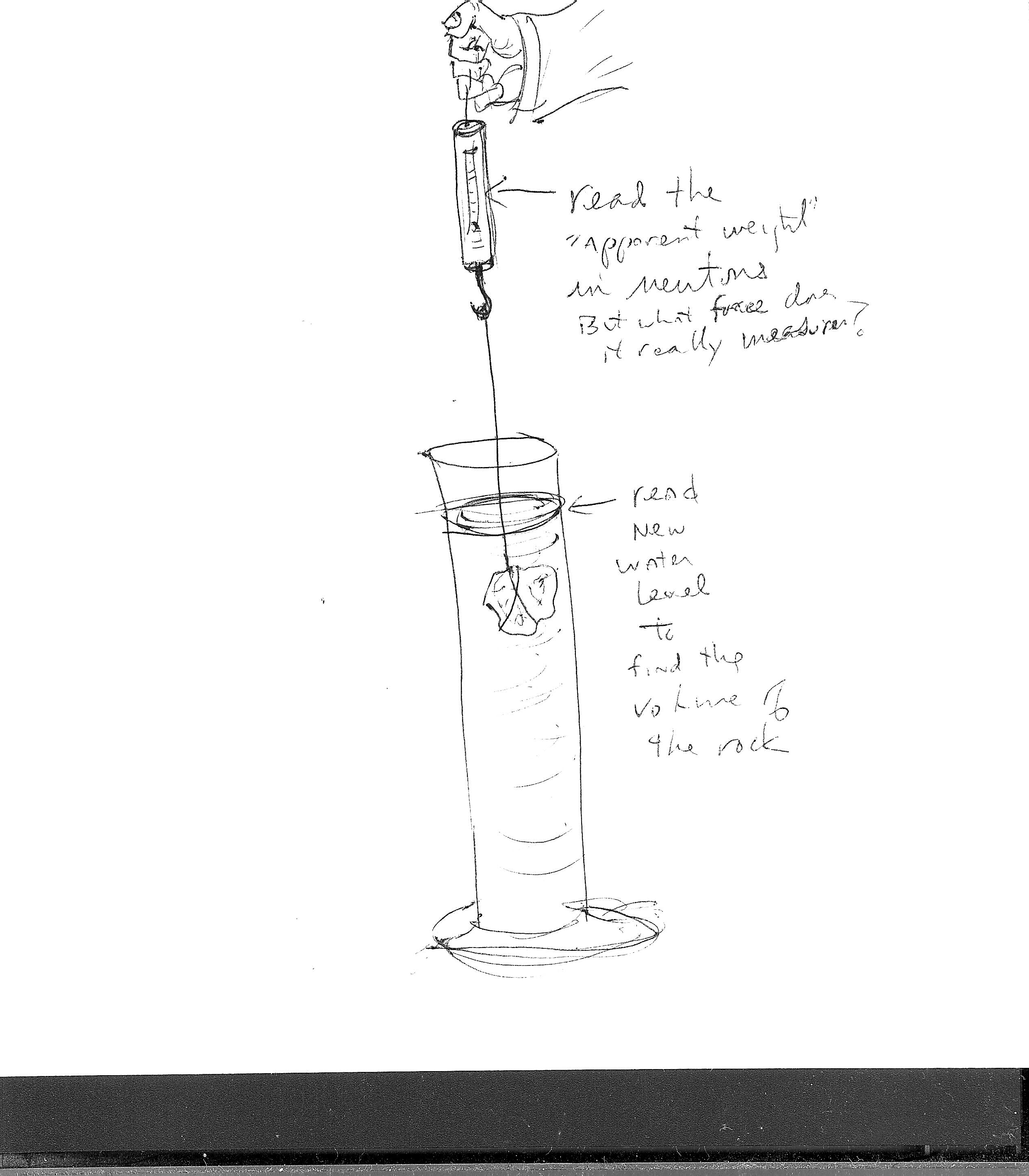Density, the Buoyant Force, and Archimedes'
Principle
Goal: To calculate the density of an irregularly shaped body
and the density of the fluid it is in.
Equipment List:
large graduated cylinder
granite rock
string
blue (or brown if the rock is heavy) spring
scale
pan balance
paper towels for cleaning up
Procedure:
- Measure the mass of your dry granite rock on the pan balance.
Record
its
uncertainty. Consult your instructor on uncertainties.
- Tie a string around your rock (not as easy as it may sound) and
leave about
one meter's length so you can hold on to it. Tie a small loop in the
other
end of the string and put that loop over the hook on the spring scale.
Hold the spring scale by the other end at zero acceleration (do you
know
why it should be zero acceleration?) and then .....
- Measure the mass of the rock in grams from the spring
scale.
Record its uncertainty
and compare it to your reading from the pan balance. They should agree.
- Measure the weight of the rock in newtons using your spring
scale; the
other side of the scale is calibrated in newtons. The spring scale is
calibrated to read grams on one side and newtons
on the other. Record its uncertainty.
- Fill up your cylinder with water a little more than half
way.
Record the
level of the water and its uncertainty.
- Completely submerge the rock in the cylinder as the rock is
suspended from
the spring scale while you hold on to the top of the scale. The rock
must
not be touching the side of the cylinder anywhere and there should be
no
significant number of air bubbles around the rock. Record the spring
scale
reading (the so called "apparent weight" of the rock) in newtons while
the rock is completely
submerged at zero acceleration. What force is the spring scale really
reading?
- While the rock is still submerged, record the new level of
the
water in
the cylinder.
Calculations: From the data gathered above do the following.
There are two different ways to find the density of the rock. One way
is very direct. Take the measured mass of the rock and divide it by the
volume of water displaced while the rock is completly submerged. The
second method does NOT use the measured volume at all. Use Newton's
second law and Archimede's principle to solve for the density of the
rock in terms of the density of water and other measured values.
1. Find the density of the rock by both methods discussed above and
compare them to the known value. Use
the lab computers and a search on the internet to find the density of
granite
or look in your textbook.
And also:
2. Find the buoyant force in newtons acting on the rock while it is
submerged.
3. From your data calculate the density of the water. Compare
it
to the accepted value.
Again, Newton's second law will give you an equation that yields the
density
of the water in terms of the weight of the rock (measured with the
spring
scale in newtons), the reading of the spring scale when the rock is
submerged, and the
volume of the rock found above and the gravity field, g.
Conclusion:
Review your results. Comment on improvements for future labs. Be clear
about the answer to all the questions found in this lab.
